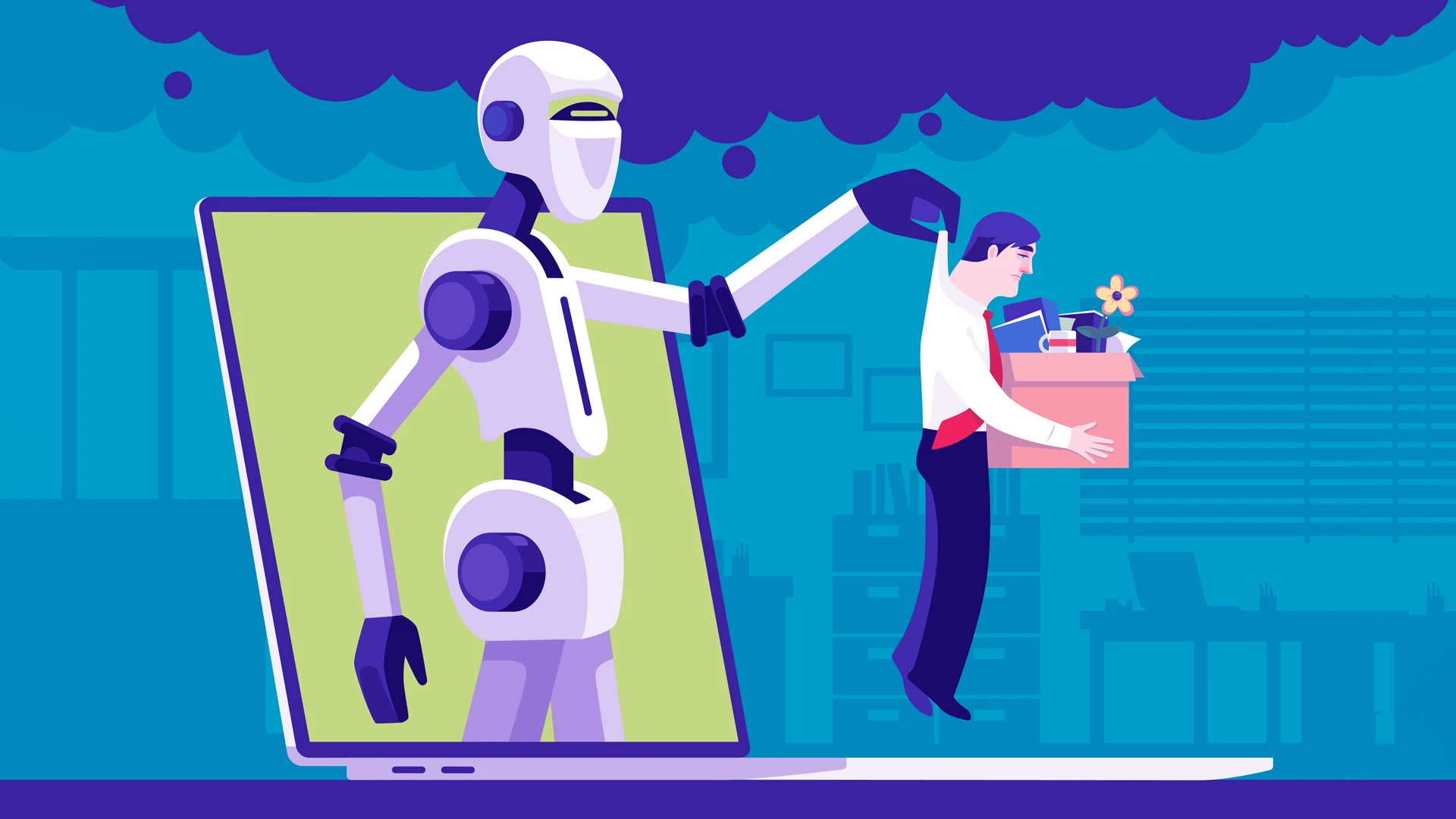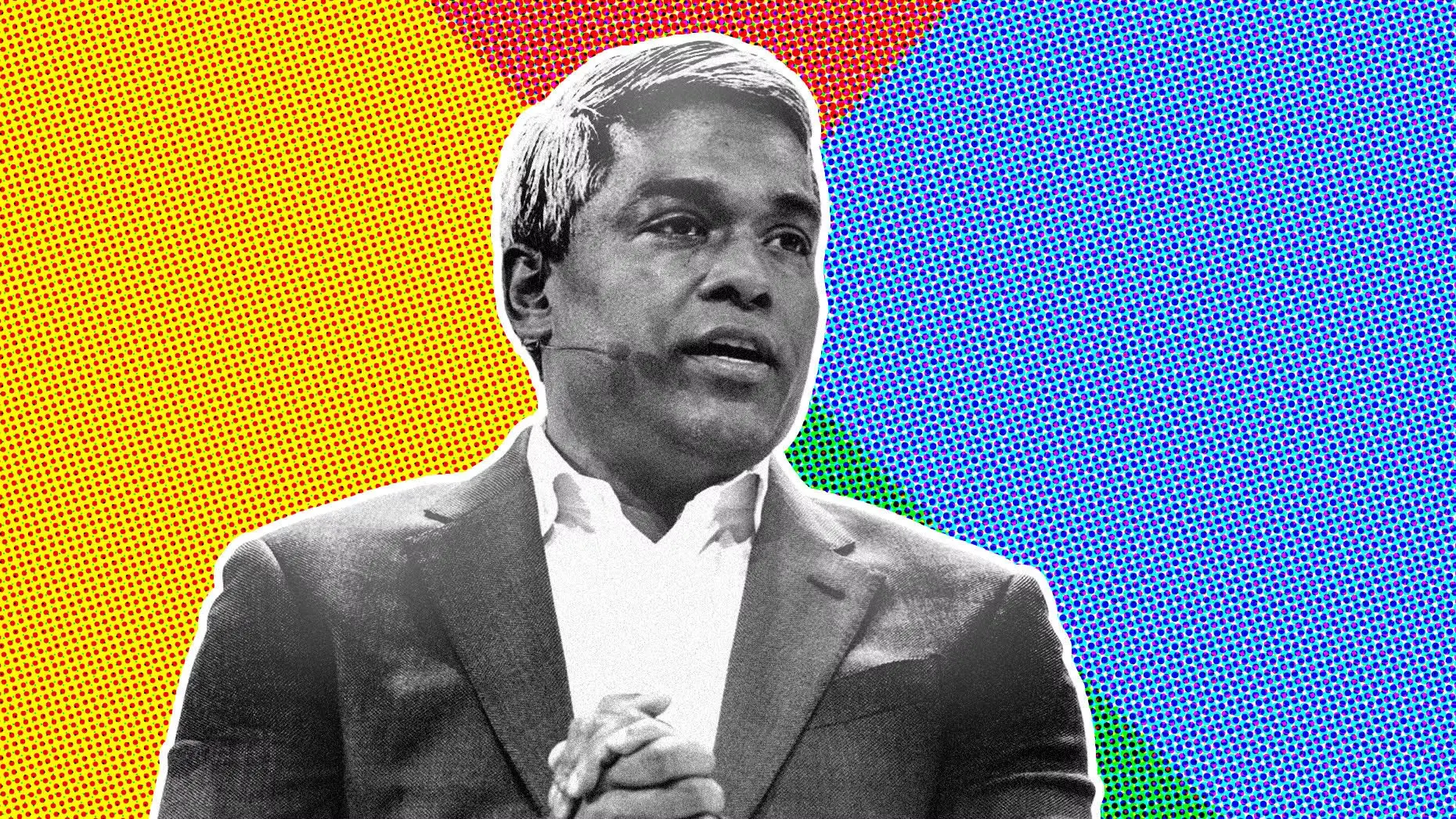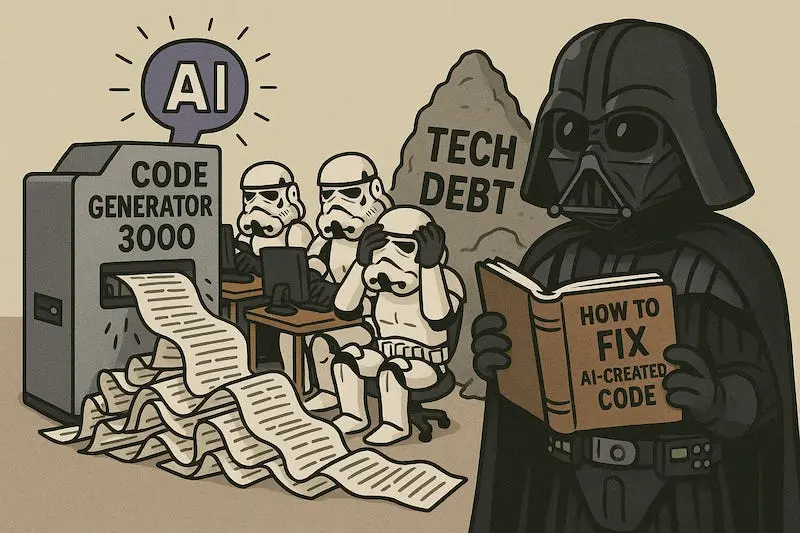
The White-Collar Robots Are Already Here
Amazon, Salesforce, and Klarna aren't waiting for the future, they're automating jobs now, with younger workers taking the hardest hit.
The AI job disruption isn’t coming, it’s happening in real-time corporate boardrooms right now. Amazon CEO Andy Jassy predicts his company’s corporate workforce will shrink from AI over the next few years. Salesforce has cut 4,000 customer support roles “because I need less heads”, in Marc Benioff’s blunt assessment. Klarna reduced its workforce by 40% through aggressive AI adoption.
The numbers tell a stark story: Goldman Sachs estimates that 6% to 7% of U.S. workers could lose their jobs because of AI adoption, while Stanford research shows entry-level hiring in “AI exposed jobs” has dropped 13% since large language models started proliferating.
The Early Targets: Coding and Customer Service
The disruption pattern is becoming painfully clear. According to Stanford Digital Economy Lab analysis, employment for young software developers has plummeted by nearly 20% since late 2022. The most exposed roles? Software development, customer service, and clerical work, exactly the positions that traditionally served as entry points for recent graduates.
The legal field provides a concrete example of how this plays out. AI Lawyer and similar platforms now handle first-pass contract checks, summarize case files, and flag risky clauses. The result isn’t eliminating lawyers entirely, but dramatically reducing the billable hours needed for early-stage grunt work that historically went to interns and junior paralegals.
What’s particularly alarming is how this hollows out the traditional career pipeline. As Stanford economists note, it’s not just about lost jobs, it’s about lost training pathways. The foundational tasks that helped young professionals cut their teeth are being automated away, fundamentally reshaping how people enter professions at all.
Corporate Reality vs. Academic Debate
While corporate leaders speak with confident certainty about AI-driven workforce reductions, not everyone is convinced this reflects pure efficiency gains. Fabian Stephany, assistant professor of AI and work at the Oxford Internet Institute, offers a more cynical perspective:
“I’m really skeptical whether the layoffs that we see currently are really due to true efficiency gains. It’s rather really a projection into AI in the sense of ‘We can use AI to make good excuses.’”
The numbers appear to support Stephany’s skepticism. Research from Yale’s Budget Lab found “no discernible disruption” caused by ChatGPT in broader labor markets, calling the upheaval from AI “minimal” and “incredibly concentrated.” The New York Fed’s September survey showed only 1% of services firms reported laying off workers because of AI in the past six months, while 35% of services firms have actually used AI to retrain employees.
The Generational Divide in AI Impact
The data reveals a troubling generational pattern. According to Stanford research, workers aged 22 to 25 in AI-exposed fields like software development, marketing, and customer service are seeing declining employment rates, while overall job growth remains stable for more experienced workers.
The math is brutal for new entrants. When companies like Amazon’s automation team expect to avoid hiring more than 160,000 people in the U.S. by 2027, that represents thousands of entry-level positions that simply won’t exist for recent graduates. Shopify CEO Tobi Lutke’s directive to employees captures the new reality: they must now prove why they “cannot get what they want done using AI” before requesting additional headcount.
This generational divide creates a fundamental tension in workforce development. As Gad Levanon, chief economist at the Burning Glass Institute, notes: “We are at the beginning of a multi-decade progress development that will have a major impact on the labor market. There’s probably much more in the tank.”
The Automation Squeeze Across Industries
The automation wave isn’t limited to tech companies. Ford CEO Jim Farley warns that AI will “replace literally half of all white-collar workers”, while half of U.S. car dealers expect AI to sell vehicles autonomously by 2027, handling everything from marketing assets to negotiations and financing without human input.
JPMorgan’s managers have been told to avoid hiring as the firm deploys AI across its businesses, and Goldman Sachs CEO David Solomon says his bank will take a “front-to-back view of how we organize our people, make decisions, and think about productivity and efficiency.”

The pattern is consistent across sectors: AI isn’t necessarily eliminating entire roles immediately, but it’s dramatically changing the composition of workforces. The Society for Human Resource Management data shows that while only 6% of U.S. jobs have been automated by 50% or more, that number rises to 32% for computer and math-related professions.
The Coming Workforce Transformation
What emerges from the data isn’t a sudden jobs apocalypse but a gradual restructuring that disproportionately impacts certain segments while creating opportunities elsewhere. The World Economic Forum estimates that AI, robotics and automation could displace 92 million jobs by 2030 while adding 170 million new roles, particularly in AI development, research, safety and implementation.
As Erik Brynjolfsson, director of the Stanford Digital Economy Lab, explains: “There’s going to be more turbulence in both directions in the coming months and years. We need to prepare our workforce.”
The most resilient workers will be those who learn to work alongside AI rather than competing with it. Research from University of Pennsylvania and OpenAI found that educated white-collar workers earning up to $80,000 annually are actually the most exposed to automation. This suggests the disruption isn’t about skill level so much as the nature of tasks being performed.
Surviving the Shift: Adaptation Becomes Mandatory
The evidence points to several key strategies for navigating this transformation:
-
Embrace AI augmentation over replacement - Workers who learn to leverage AI tools become dramatically more productive. According to recent data, workers who use AI make 40% more in the U.S.
-
Focus on uniquely human skills - Roles requiring emotional intelligence, complex judgment, creativity, and strategic thinking remain more resistant to automation.
-
Continuous learning becomes non-negotiable - With 29% of employers now seeking only AI-proficient candidates and 1 in 3 hiring managers refusing to hire workers without AI skills, technical fluency is becoming table stakes.
-
Consider resilient industries - Healthcare, cybersecurity, green energy, and education technology show strong growth despite automation trends.
The transition won’t be smooth or evenly distributed. As we’ve seen, younger workers in entry-level roles face the most immediate pressure, while experienced professionals have more time to adapt. The challenge for organizations and educational institutions will be closing this experience gap before it becomes a permanent chasm.
The robots aren’t coming for all white-collar jobs tomorrow, but they’re already reshaping who gets hired, what skills matter, and which careers remain viable launching points. The companies and workers who understand this shift aren’t waiting for the future, they’re adapting to the present reality.



